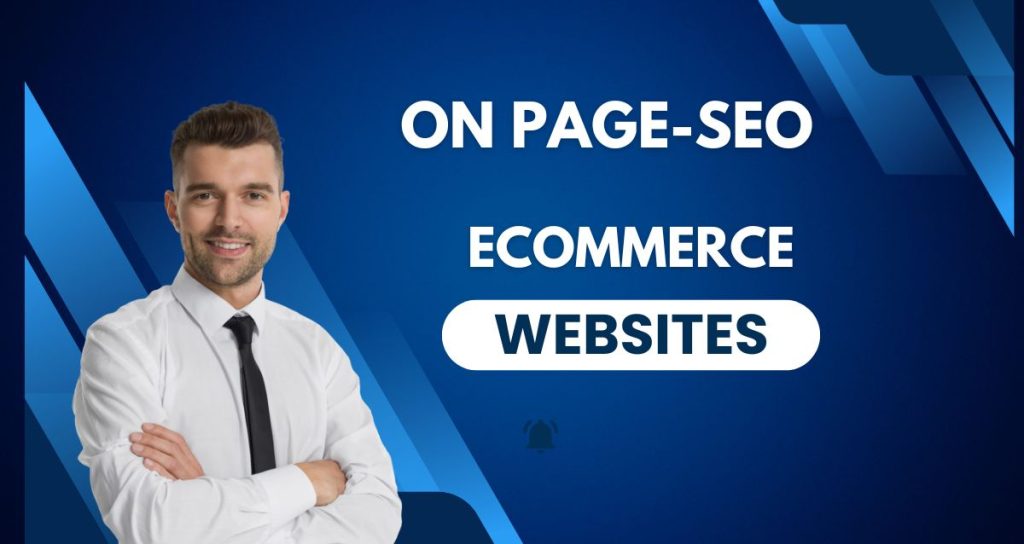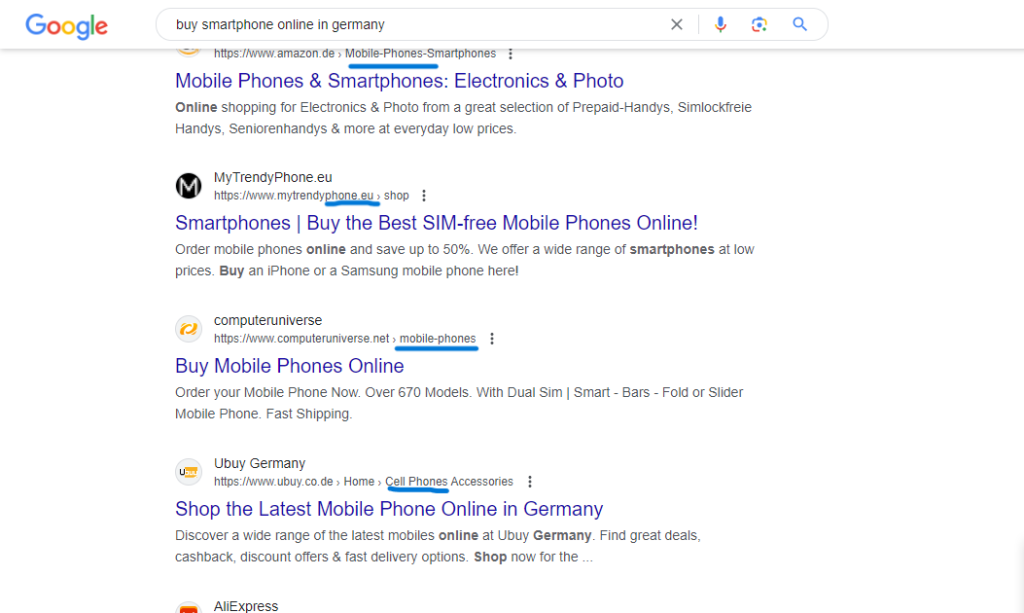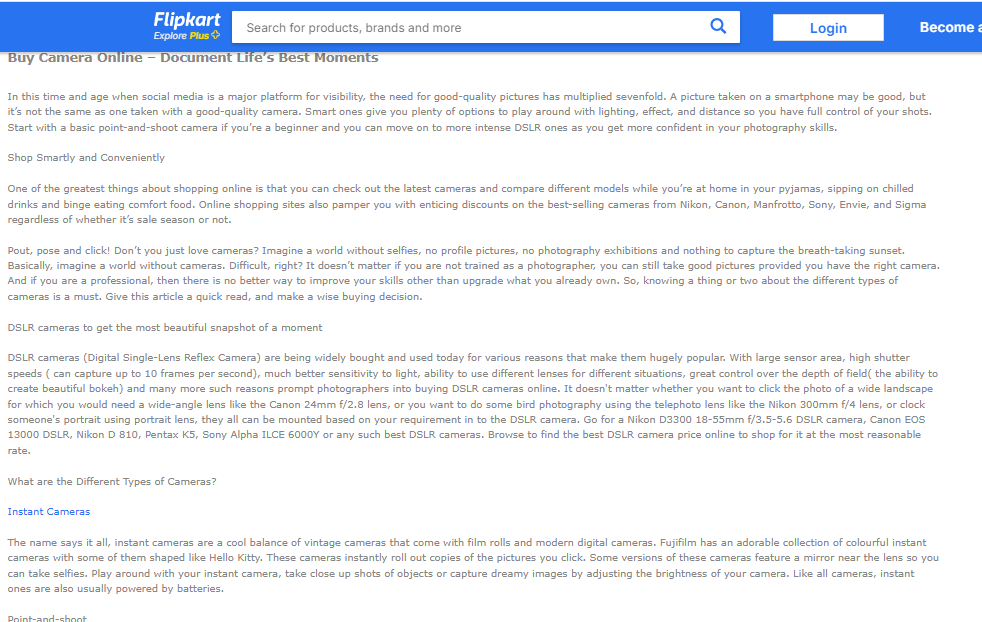
On Page SEO for Ecommerce Websites is essential for boosting your online store’s visibility and search engine rankings. This process involves optimizing individual web pages to improve their relevance and user experience.
Moreover, effective on-page SEO techniques include keywordoptimization, meta descriptions, and high-quality content. By implementing these strategies, your ecommerce site can attract more organic traffic, leading to higher conversion rates.
Additionally, it’s crucial to focus on elements like page load speed and mobile-friendliness to enhance user satisfaction. Ultimately, mastering on-page SEO for your online stores will give you a competitive edge in the digital marketplace.
On Page SEO for Online Websites
To achieve optimal on-page SEO, start by conducting keyword research to target relevant terms. Next, optimize page titles, meta descriptions, and headers with targeted keywords. Ensure content is high-quality, informative, and engaging. Use internal links to enhance navigation and improve user experience. Let’s jump into the topic-
Category Pages
Generally, in e-commerce, SEO is done for category pages because an e-commerce website can have thousands of product pages. SEO for thousands of product pages is very difficult. Moreover, if we do SEO for one or a few product pages, those products might not be available after some time.
For instance, if we search with the keyword “buy smartphone online in Germany,” we see that everyone is ranking with their category pages.

How to Write Keyword Titles and Meta Descriptions for Category Pages
Keyword: Buy smartphone/ smartphone price
Title: Mobile Phone: buy smartphone at discounted price-Domain.com
Meta: Description: Order mobile phones online and save up to 50%. We offer a wide range of smartphones atdiscounted prices. Buy an iPhone or a Samsung mobile phone here!
Similarly
Keyword: Buy laptop/ laptop price
Title : Mobile Phone: buy laptop at lowest price-Domain.com
Meta: Description: Order mobile laptops online and save up to 50%. We offer a wide range of laptop at low prices. Buy an hp or a Dell mobile laptop here!
In this case, using double keywords in the title is a useful strategy. Additionally, mentioning the brand in the meta description is a good tactic. Including the brand name helps Google understand that it is a category.
Content
Content is an essential part of On Page SEO for Ecommerce Websites. Adding content to category pages is a good SEO strategy, and we should follow this approach. This technique helps achieve higher rankings quickly. If you have 100 category pages, you should write 100 articles including brand or subcategory information.


The pictures have been taken from flipcart
So, if you need rankings and traffic, you should follow this strategy.
Blogging-Best On Page SEO for Ecommerce Websites
Blogging is one of the best strategies of the on page SEO for ecommerce websites. Having a blogsection on an e-commerce website is a good strategy. For example, we can look at Daraz, which has created a blog section. So, why did an e-commerce website create a blog? Because Google likes fresh content. What is the purpose of a blog on an e-commerce website?

You can see that they are keeping the blog under a subdomain, although it’s better to keep the blog on the main domain. Generally, they promote their products through the blog.
Interestingly, they are using the blog to serve the purpose of product pages. This not only engages users but also aids in marketing.
Other Ecommerce On page SEO Strategies
Image
The image must be attractive and well-optimized for SEO. In this case, we can rename the image using keywords. We can also use focus keywords or LSI keywords in the image alt text. Under no circumstances should the image be uploaded with meaningless names
Set up Internal Links
Internal linking is a crucial strategy for ecommerce websites. It involves linking various pages within your site to improve navigation, user experience, and SEO. Here are some key practices for effective internal linking in ecommerce:
- Category to Product Pages: Ensure that each category page links to relevant product pages. This helps users find products easily and distributes link equity.
- Product to Related Products: On product pages, include links to related or recommended products. This encourages users to explore more items and increases the chances of additional sales.
- Breadcrumb Navigation: Implement breadcrumb navigation to help users understand their location within the site and easily navigate back to previous categories or the homepage.
- Content Links: In blog posts or articles, link to relevant product or category pages. This not only enhances SEO but also directs readers to purchase options.
- Footer Links: Use the footer section to link to important pages like popular categories, top-selling products, and customer service pages.
By following these practices, you can create a well-connected ecommerce website that enhances user experience and boosts SEO performance.
Keep FAQ Section
It is one of the best practice to keep FAQ section in an ecommerce website. Customers are engaged and get clear and precise information from the FAQ section.
It helps customers to take buy a products. Though, Users research a product before buying, they have still some questions about that product. In this case, FAQ section fulfills customers queries.
Collect Some Product Reviews
According to Search Engine Journal, 91% of people buy products after reading reviews. Good reviews have a significant impact on purchasing decisions.
In this case, the seller must provide quality products or services. Maximum negative reviews will negatively impact your KPI achievement.
Build a Flexible UI
The UI (User Interface) of an ecommerce website should prioritize user experience, making it easy and intuitive for customers to navigate and make purchases. Key elements include:
- Homepage: A clear navigation bar with links to main categories, account, cart, and search function. Additionally, a prominently placed search bar helps users find products quickly. Highlight featured products, special offers, or new arrivals with banners and sliders.
- Category Pages: Include filter and sort options to refine product searches by price, brand, and rating. Moreover, display product thumbnails with images, names, prices, and brief descriptions, along with pagination for easy navigation.
- Product Pages: High-quality images with zoom functionality, detailed product information, and customer reviews should be prominently displayed. Ensure easily accessible “Add to Cart” and “Buy Now” buttons.
- Shopping Cart: Provide a summary of items with images, names, quantities, prices, and total cost. Furthermore, allow users to edit quantities, remove items, or save for later, and include a clear checkout button.
- Checkout Process: Offer guest checkout, progress indicators, simple form fields for shipping and billing, and multiple payment options like credit cards and PayPal.
- User Account Dashboard: Include order history, profile settings, and a wishlist for favorite products.
- Responsive Design: Ensure the website is optimized for mobile devices and fast loading times.
- Customer Support: Provide live chat, easily accessible contact information, and a support form.
- Footer: Include quick links to policies, social media icons, and a newsletter signup option.
By incorporating these elements, you ensure a seamless shopping experience, encouraging repeat visits and purchases.
What is the best tools for eCommerce on page SEO?
Some of the best tools for eCommerce on-page SEO include:
- SEMrush: Provides comprehensive SEO analysis, keyword research, and competitive insights.
- Yoast SEO: A WordPress plugin that helps optimize content and provides real-time suggestions.
- Google Keyword Planner: Offers keyword research and insights directly from Google’s search data.
- Moz Pro: Offers tools for keyword research, rank tracking, and site audits.
- Ahrefs: Provides tools for keyword research, backlink analysis, and site auditing.
These tools help optimize product pages, category pages, and overall site structure for better search engine visibility and user engagement.
Conclusion
In conclusion, implementing effective on-page SEO strategies is crucial for enhancing visibility and attracting targeted traffic to ecommerce websites. By optimizing content with relevant keywords, improving site structure, and focusing on user experience, businesses can significantly improve their search engine rankings.
Additionally, integrating LSI keywords strategically helps broaden content relevance and reach. Ultimately, continuous monitoring and adjustment of SEO efforts ensure sustained growth and competitiveness in the dynamic online marketplace.
